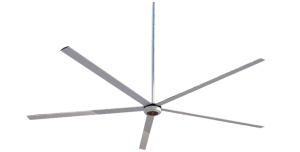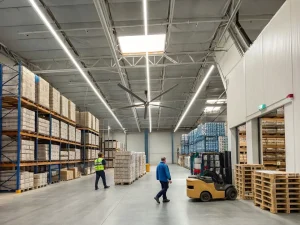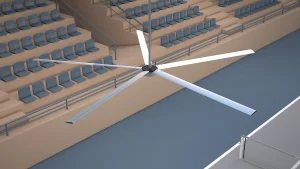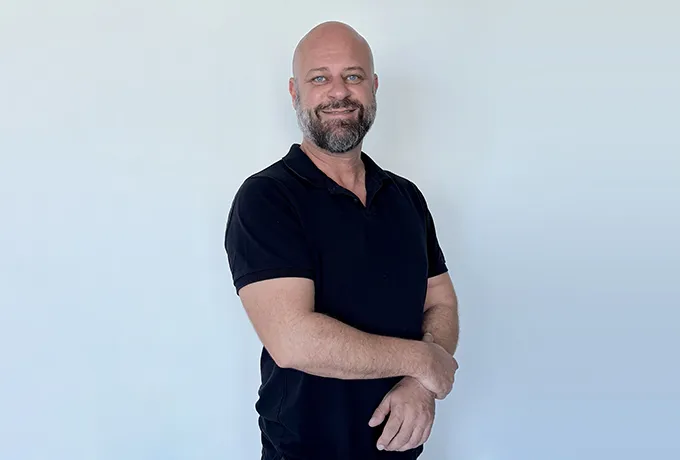Industrial fans are the backbone of many large-scale cooling systems. But when performance drops or failure hits, unexpected downtime and repair bills cause stress and loss. Understanding the true lifespan of an industrial fan—and how to extend it—can save you time, money, and frustration.
The effective life of an industrial fan depends on several factors including fan type, motor quality, bearing system, and maintenance practices. Typically, high-quality industrial fans last between 5 to 15 years with proper care. Factors like operating environment and usage frequency directly impact the fan’s life expectancy.
The average life of an industrial fan ranges from 5 to 15 years, depending heavily on the fan type, build quality, and operational conditions. A quality fan manufactured with premium bearings, a reliable motor, and durable fan blades tends to last longer.
In more demanding environments—such as manufacturing plants, warehouses, or high-dust zones—fans can wear faster due to abrasive particles, vibration, and continuous ventilation demand. It’s important to choose the right fan for your specific application and schedule regular service.
Regular lubrication, inspection of the shaft, and replacing worn-out rotors can extend the fan lifespan. Fan manufacturers often provide a maintenance schedule that includes tips on how to extend the lifespan through periodic checkups.
Several critical key factors influence how long your fan lasts:
For example, in high-temperature or abrasive environments, you’ll need a fan with a thicker material or one rated for continuous duty.
For more on long-lasting fan options, see this article on quality HVLS fans for extreme environments.

hvls fan
When it comes to longevity, axial fans and centrifugal fans offer different strengths. Axial fans are great for moving large volumes of air efficiently, while centrifugal fans are often more rugged and handle higher pressures.

large fan in a warehouse
Centrifugal fans tend to last longer in harsh industrial settings due to their enclosed design and stronger resistance to vibration. Axial fans, on the other hand, are ideal for general ventilation in more stable environments like gyms, schools, or commercial spaces.
For advanced fan options, check out the M750 High Performance Series.
Routine maintenance tips can significantly impact the fan’s life:
Without proper care, even the best industrial cooling fan will degrade quickly. Implementing a structured maintenance schedule minimizes unexpected downtime and ensures optimal performance across years.
The fan manufacturer‘s experience directly impacts the lifespan and performance of the fan. A company with a proven record in fan manufacturing will focus on industrial cooling, reliability, and provide full technical support.
If you’re sourcing fans for a factory, warehouse, or commercial building, choose a cooling fan manufacturer who offers:
Explore how Vindus provides factory-direct industrial solutions with custom HVLS fans for commercial buildings.
The bearing system is one of the most critical components influencing the life of an industrial fan. Bearings support the shaft and enable smooth rotation of the fan blades.
There are primarily two types of bearings used:
Lubrication is vital. Without proper lubrication, bearing failure is one of the leading causes of industrial fan downtime. Many modern fans come with sealed or auto-lubricating bearings to minimize manual intervention.
The motor is the heart of any industrial fan. High-efficiency motors with thermal protection, appropriate fan speed settings, and robust windings ensure a long operational life.
When the motor is undersized for the fan type, it can overheat or operate inefficiently, reducing the overall lifespan. Motors built for ventilation systems in high-temperature or abrasive environments should be selected with higher insulation classes and protective enclosures.
If you want to extend your fan’s lifespan, you must recognize early signs of wear. Key indicators include:
Ignoring these signs leads to escalating maintenance costs, reduced durability, and unexpected downtime.
Regular inspections and condition monitoring help you rotate, clean, or replace components before failure occurs.

HVLS fan mounted in sports hall
Are There Environmental Factors That Shorten Fan Life?
Absolutely. Your operating environment plays a big role in how long your industrial cooling fan will last.
Using fans in general ventilation versus high-pressure cooling applications means you must choose the right fan for the job.
If you’re unsure, the HVLS fan selection guide can help tailor recommendations for your environment.
Different fan types have distinct advantages:
| Fan Type | Best For | Lifespan Potential |
|---|---|---|
| Axial fan | High volume, low pressure | 5–10 years |
| Centrifugal fan | High pressure, dusty environments | 8–15 years |
| HVLS fan | Large areas, energy efficiency | 10–20 years |
Axial fans are compact and cost-effective for general airflow. Centrifugal fans withstand vibration, dust, and offer superior durability. For large indoor spaces like warehouses, gyms, and factories, the HVLS fan stands out for industrial cooling, reduced energy consumption, and longevity.
Learn more about different types of industrial fans and their specific use cases.
How often should an industrial fan be serviced?
Every 6 to 12 months is recommended. Check bearings, clean fan blades, inspect the motor, and ensure balanced operation.
Do industrial fans last longer than commercial fans?
Yes. Built with thicker materials and more robust fan housing, industrial fans are designed to withstand continuous use in tough conditions.
Can HVLS fans run 24/7?
Absolutely. High-end HVLS fans are rated for continuous duty and offer silent, vibration-free operation over long periods.
How do I know when it’s time to replace a fan?
When repairs exceed 50% of the cost of a new unit, or if energy use spikes due to inefficiency, replacement may be the smarter long-term decision.
What’s the difference between a cooling fan and a ventilation fan?
Cooling fans lower temperature, while ventilation fans exchange air. Some fans do both—especially in HVLS fan systems.
Choosing the right industrial fan isn’t just about airflow or cooling—it’s about long-term value, efficiency, and reliability. By:
You’ll extend the lifespan, reduce downtime, and get the most out of your investment.

Hi, I’m Michael Danielsson, CEO of Vindus Fans, with over 15 years of experience in the engineering and design industry. I’m here to share what I’ve learned. If you have any questions, feel free to contact me at any time. Let’s grow together!